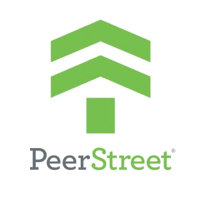I’ve invested over $50,000 of my “alternative” money into PeerStreet real estate notes because of the ability to diversify into 50+ different high-interest loans backed by physical real estate. Here is a case study of a $10 million mansion that bounced in and out of late status for years, only to suddenly get paid back in full. You can find additional case study links and the most recent update to my overall portfolio performance in my Peerstreet review.
I called this property “90210” as it was located in a prime spot in Beverly Hills. The loan photo on the Peerstreet listing was quite drab:

Here’s what it looked like on the MLS page when they listed it for over $10 million:

Initial investment details.
- Property: Single-family residential property in California.
- Target Net Investor Rate/Term: 8.25% APR for 31 months.
- Appraised at $8.75M = 60% LTV.
- Cash-out/Bridge loan secured by the property in first position.
- Loan originator retained 13% “skin in the game”.
Timeline.
- June 2018. Loan originated. Original maturity date was January 2020.
- June 2019. Payments are now late.
- August to September 2019. Payments are still late. Demand letters are sent.
- October 2019 to January 2020. Intermittent payments are made, but still behind and late.
- February 2020. Peerstreet approves a loan extension to April 2020.
- April 2020. Late again.
- May 2020. Loan brought current!
- July 2020. Guess whose late again?
- August 2020. Another extension is approved, but does it really matter?
- September 2020 to January 2021. Still… late.
- February 2021. Loan is suddenly paid off in full.
Final numbers. As the loan was paid off in full, I earned the full promised 8.25% annualized return but for 31 months instead of the original 18 months. I guess that worked out to my benefit, given the current low interest rate environment. My overall annualized return across my entire Peerstreet portfolio is currently 6.9%. These numbers are net of all PeerStreet fees.
My commentary. This loan is an example where for nearly three years, I stared at the same loan that with a late/default status every time I logged into Peerstreet. It spent more time late than current, yet one day it suddenly became paid off in full and actually improved my overall return numbers. The originator appears to be juggling many different loans, but the property remained valuable enough that they really had to eventually pay off this loan despite having to pay me 8.25% interest while I waited.
It was good to see (and rare these days) to see the originator keep an interest in the loan, as that is usually taken as a sign of confidence. I wish I could only invest in loans with such “skin in the game”, but the reality is that Peerstreet inventory is currently in such great demand that nearly all of their notes sell out instantly to automated investors.
Again, the lesson is to diversify, ignore the late status, and invest money with which you can be patient. Let Peerstreet do the due diligence and manage the late payments and possibly the foreclosure process.
Bottom line. At the moment, out of the $50,000+ I’ve now invested into 66 loans at PeerStreet over 4+ years, 55 were paid back, 8 are current, and 3 are late. However, many of those paid-off loans were late at some point in time. This is one example of a single-family residential loan that was constantly late for years, but ended up being paid in full. The annualized return for this loan was 8.25%, while my overall annualized return across my entire portfolio is 6.9%.
If you are interested, you can sign up and browse investments at PeerStreet for free before depositing any funds or making any investments. You must qualify as an accredited investor (either via income or net worth) to invest. If you already invest with them, they now sync with Mint.com.

 The Best Credit Card Bonus Offers – 2025
The Best Credit Card Bonus Offers – 2025 Big List of Free Stocks from Brokerage Apps
Big List of Free Stocks from Brokerage Apps Best Interest Rates on Cash - 2025
Best Interest Rates on Cash - 2025 Free Credit Scores x 3 + Free Credit Monitoring
Free Credit Scores x 3 + Free Credit Monitoring Best No Fee 0% APR Balance Transfer Offers
Best No Fee 0% APR Balance Transfer Offers Little-Known Cellular Data Plans That Can Save Big Money
Little-Known Cellular Data Plans That Can Save Big Money How To Haggle Your Cable or Direct TV Bill
How To Haggle Your Cable or Direct TV Bill Big List of Free Consumer Data Reports (Credit, Rent, Work)
Big List of Free Consumer Data Reports (Credit, Rent, Work)
“ignore the late status” – I suspect I would never be able to do that.
Understandable, but consider that a few companies in the SP 500 are probably struggling mightily right now. They might pull things out, or they might go bust. I don’t really worry about that either because the S&P 500 is diversified amongst many companies.
What an ugly house!
I was also in on that Beverly Hills house at Peer Street and have had similar financial performance (7.4% annualized) over the last few years. I have one investment that was a loss (house in Palm Beach County, FL) and another that is a likely loss (multi-unit near Atlantic City) and has been in the foreclosure process for over two years. I have been moving the money out of Peer Street and investing instead in diversified private real estate partnerships.
@VagabondMD – can you explain a “loss”? Are you not guaranteed your investment back with minimal return, and therefore flat is a loss?
Of course, not! There are no 7-8% guaranteed returns in this world. A loss is a loss.
The WPB property investment was $1000, I received $22 in interest, and two years later, after the foreclosure process, received $872 back, a net loss of $106.
Any particular attributes you look for on the peerstreet listings?
I’m not even sure if a higher or lower LTV is better… I assume higher’s better?
YTM, I assume this is the target rate, so the higher the better?
Longer or shorter term?